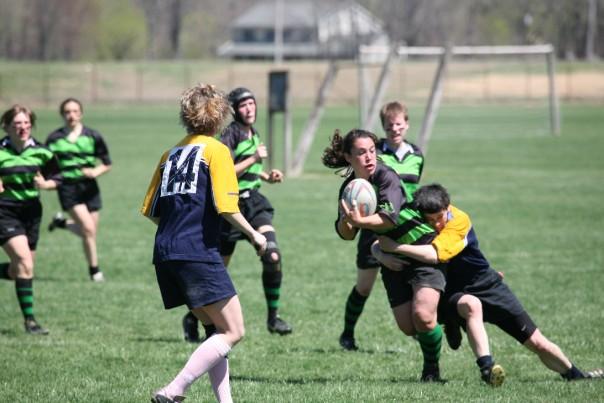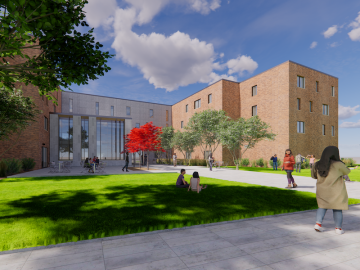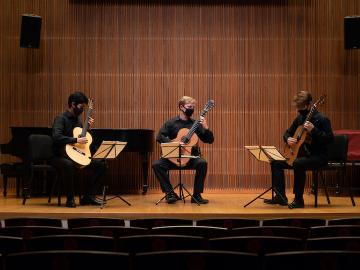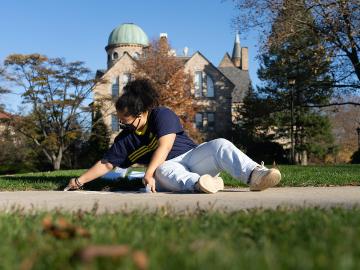Join the Club
August 24, 2015
Rosalind Black

Organizational and planning skills, physical engagement, collaboration opportunities, and self and team improvement are all offerings of the Oberlin’s club sports program. But, according to rising fourth-year, men’s Ultimate Frisbee team captain, and Club Sports Council Vice President Jason Freedman, club sports means more to athletes than simply a list of achievements: “Time and time again I see and talk to students who cite their relationship with their club sports team to be their defining experience at Oberlin.”
How does playing a sport come to be such a huge part of students’ Oberlin experience? Club sports are student-run, from the creation of the club to its daily operations, meaning that students go from participants to instrumental organizers by nature of their involvement. The officers of each team are in charge of everything, including planning practices, running meetings, writing and managing budgets, ordering jerseys and equipment, and registering for competitions. Without a set of coaches and staff to help keep the team on track, students are entirely responsible for devising workouts, designing practices, focusing on specific skills with players, and preparing the team for competition, with only themselves to drive their improvement. As Freedman puts it, “When club sport athletes go out and work hard to achieve something, we truly do it because we want to do it, for ourselves and for our teammates.”
Student design and execution has been the way of club sports for decades, but a new door opened for cross-club organization, collaboration, and support during the 2007-2008 academic year with the creation of the Club Sports Council (CSC). Previously, each club team was isolated, attempting to treat sports injuries on their own, driving student-owned vehicles to away games, and individually submitting budgets to the Student Finance Committee (SFC) for funding.
That all changed when Alia Kate ’08 (women’s rugby), Ilana Garcia-Grossman ’08 (women’s Ultimate Frisbee), and Matt Hollenbeck ’09 (ice hockey) decided to unify all the club sports and lead the charge for garnering administrative support. Their original objectives were: obtaining access to a trainer to treat injuries and prevent future injuries, and access to better transportation methods. After an immense representation of more than 50 jersey-clad club sports athletes at a Board of Trustees meeting—“an impressive display that they claim they had never seen before,” says Kate—President Marvin Krislov created a task force to help club sports realize these goals.
With the creation of the Club Sports Council, the program not only received access to a trainer and the ability to rent well-maintained cars for travel, but a new system of self-governance and organization that fostered communication between clubs. Students from every club sport have the opportunity to help write and review budgets and charters, serve on the judicial committee, organize fundraising and outreach, and serve as club sports representatives to the Oberlin community and schools across the nation. “It’s a way of empowering the groups and ensuring investment,” says Ben Sandberg ’10, a men’s rugby team captain and fellow CSC organizer.
The CSC was the first organized effort in recent years to share information between club sports. “We liked the idea of sharing institutional knowledge because we were constantly, as individual club sports, trying to relearn things that [alumni] had already figured out,” Hollenbeck says. “With the [CSC] we could share all of our collective knowledge and experiences.” The CSC took a step toward easier transfers of knowledge and leadership among club sports, but there is always more to do, says Betsy Bruce, director of recreation and club sports since 2008 and an instrumental supporter of the program through the creation of the CSC and beyond.
Both Bruce and Freedman say they hope creating a club sports policy manual will help the organization retain more of the wisdom and insight of graduated student officers that would otherwise be lost in transition.
Bruce, who Freedman refers to as “the lifeblood of club sports at Oberlin,” says she wishes to complete a policy manual before she retires but refuses to do so without students’ input. “I can extract and pull out policies from other school’s manuals and make one for us, but Oberlin has always focused on consensus. The CSC will decide on a topic, and I’ll pull out a page from Case [Western Reserve University]’s or Carleton [College]’s manuals and say, ‘What do you think?’ They look at it and say, ‘This is OK, but this,not so much.’ We look at it and discuss it.”
Bruce and Freedman say they also aim to create more CSC programming in the hopes of strengthening the bond between clubs and raising awareness about the resources available to them. “We are trying to build a little more community so folks in the smaller and newer clubs realize there is a greater whole to this program,” Bruce says. “That’s my real goal: a little more awareness that there’s more love out there. You’re a small club and you’re struggling? That’s why I want you to come to a council meeting. You will hear other people’s stories and brainstorm with them.” This year the CSC brought athletes together by hosting games of dodgeball and capture the flag, and helped run community events such as Track or Treat, with more to come in the future.
Whether it’s traditional club sports such as Ultimate Frisbee and rugby; sports that transitioned from varsity to club such as fencing and ice hockey; or sports more on the fringe such as bowling and Quidditch, Oberlin’s club sports program has a lot to give its student athletes. Participating in any one of the 22 active club sports—or creating a new one—as a player, club officer, or council member provides many opportunities for personal and organizational growth. “Most new recruits have never heard of the sport, don’t know the rules, and are not always as athletic compared to varsity athletes. That being said, these new recruits have a general interest in the underlying culture of the sport, the physicality of it, or the social network that comes along with playing a team sport,” Kate says. “In this way, we continue the constant process of learning the sport, mastering it, and then learning how to pass the skills on to younger classes. The transference piece is powerful and creates a lasting bond between club sports athletes that stretches across generations.”
No matter a student’s background or level of experience, the most important part of being a club sports athlete is getting involved, says Bruce. “Letting anyone who wants to try, try—to me, that’s what club sports is about.”
Tags:
You may also like…
Construction Begins on New Residence Hall
September 26, 2023
Four-story structure to house 400 students, accommodate campus-wide renovations to other residences.
This Week in Photos: The Soundtrack of Fall
November 27, 2020
A guitar ensemble performance in Kulas Recital Hall featured Suvan Agarwal '23, Aidan Wiley '20, and Craig Slagh '21. The passion demonstrated in their live streamed performance was captured in photos and chosen to be among the images included in this week’s photo series.
This Week in Photos: Creativity and Strength
November 13, 2020
Inspirational words and chalk drawn images on the sidewalks of Wilder Bowl greeted those passing by this past week. This chalk walk exercise resulted in several standout images featured in this week’s photo series.


